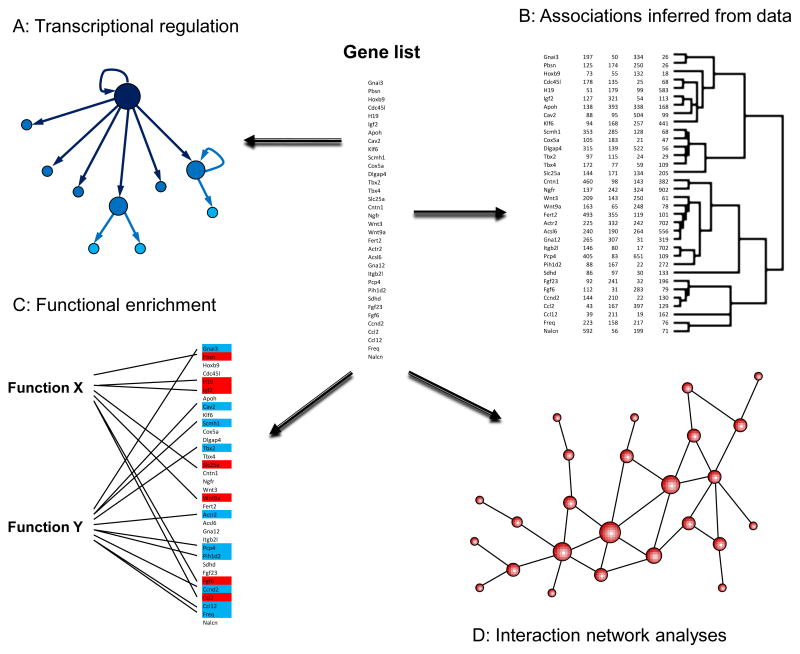Figure 4.
Moving from gene lists to biological insights. A number of data analysis methods are available to decrease the complexity of high-throughput data and gather biological information. In certain applications, transcriptional regulation information, either by incorporating existing knowledge or constructing transcriptional networks de novo, can be used to infer the causal structure of the data and infer regulatory nodes (A). Data can also be analyzed to identify new functional associations (B). For example, gene expression data can be used to cluster genes with similar profiles and identify putative functional interactions. Gene annotation information can also be integrated with experimental data to identify enriched functions and processes in large datasets (C). Lastly, data can be overlaid on protein-protein interaction networks to identify highly-connected hubs which tend to exert a regulating influence (D).

